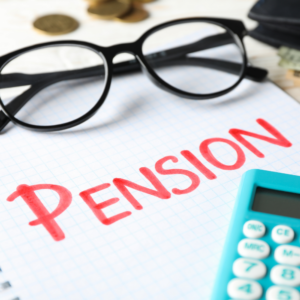
What is the difference between a defined benefit and defined contribution pension? In the UK there is a large emphasis on individuals having adequate provisions at retirement. Because of this, the UK Government have made it a legal requirement to offer workplace pensions for qualifying individuals.
The pensions come in two forms: Defined Benefit (DB) and Defined Contribution (DC). The difference between the two will be explored in this blog, highlighting how the benefits are built up and the contrasts when taking the money.
Defined Contribution (DC) Schemes
Defined contribution schemes are pensions built up through a combination of contributions and investing. They are the most common type of schemes offered in the private sector due to their simplicity.
How are the benefits built up?
Employers and employees contribute to a pension monthly. The minimum contributions are 3% for employers and 5% for employees. Employees can also increase their contributions and sometimes the employer will match this.
The contributions are invested in to the pension scheme’s available funds. The premise is that over the period of an employees working life, the investments should compound to generate a larger value than the amount of the contributions.
Generally, the pensions are invested adventurously (predominantly in equities) whilst the member is younger, and then the risk profile of the assets are tapered off the closer you move to retirement.
How are the benefits taken?
Due to the ‘Pension Freedoms Act 2015‘, individuals were provided flexibility when drawing their defined contribution pension benefits from age 55. There are now a number of ways to draw down your pension:
- Take the whole amount as a lump sum – you would receive your 25% tax free lump sum, but anything in excess of this would be taxable at your marginal rate.
- Flexi-access draw down – you can phase the draw down by crystallising some of the benefits. This is useful if you don’t want to take all of your pension at once. 25% of the amount crystallised will be tax free, with the remaining 75% moving into a crystallised pot which is taxable when you access it.
- Uncrystallised funds pension lump sums – you would crystallise some of the pension benefits, with 25% tax free and the other 75% taxable at your marginal rate.
Are there lifetime allowance issues?
Yes – defined contribution pensions are subject to the lifetime allowance test. Each time benefits are crystallised, the amount crystallised is tested against the LTA. Every time this is done, the amount crystallised uses up a percentage of the allowance.
For example, if you crystallised £200,000, this would be assessed against the available LTA (currently (£1,073,100). Post-crystallisation, you would have 81.37% of your LTA available.
Any benefits that exceed the LTA are subject to a tax charge at 25% or 55%, depending on whether the pension was taken as income or a lump sum.
Defined Benefit (DB) Schemes
Defined Benefit pensions (also known as final salary schemes) differ from DC schemes in that they are not a pot that’s built up. Instead, they are a guarantee of a future income. The annual benefit is index linked (therefore it increases in line with inflation), and it will paid for the entirety of your life.
These types of schemes are quite rare today as they are very expensive for the providing employer, and extremely complicated to calculate. Typically, the schemes are now only offered by public sector employers – such as for Government officials, Police Officers and Teachers.
How are the benefits built up?
Employers and employees contribute to the scheme in the same way as a defined contribution scheme. However, benefits are calculated based off the below factors:
- The duration of employment
- Final salary or the average salary throughout employment (depending on the scheme)
- The accrual rate – this is usually 1/60 for each year of service
The above calculation provides the annual benefit that will be paid to the individual for their lifetime.
How are the benefits taken?
Once you have reached the schemes normal retirement date, you can start to take the annual benefit from the pension. The benefits are paid monthly, and are taxed at source through PAYE.
Scheme members can also elect to take a 25% tax free lump sum from their scheme, which results in a reduced annual benefit. The 25% tax free element is calculated by an actuary based on the commutation factor of the scheme.
Are there any lifetime allowance issues?
Like any pension, defined benefit schemes are subject to a lifetime allowance test. Despite the pension not being a pot, the value of the benefit is assessed. This is calculated through a standard valuation factor of 20:1.
For example, if your annual benefit was £20,000 – the amount subject to the lifetime allowance test would be £400,000. If you took your 25% PCLS, the annual benefit post the 25% would be subject to the standard valuation factor and then the 25% added back in to determine the overall value.
Get in touch
If you have any questions regarding your UK pension, please do not hesitate to get in touch.



